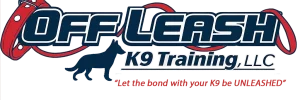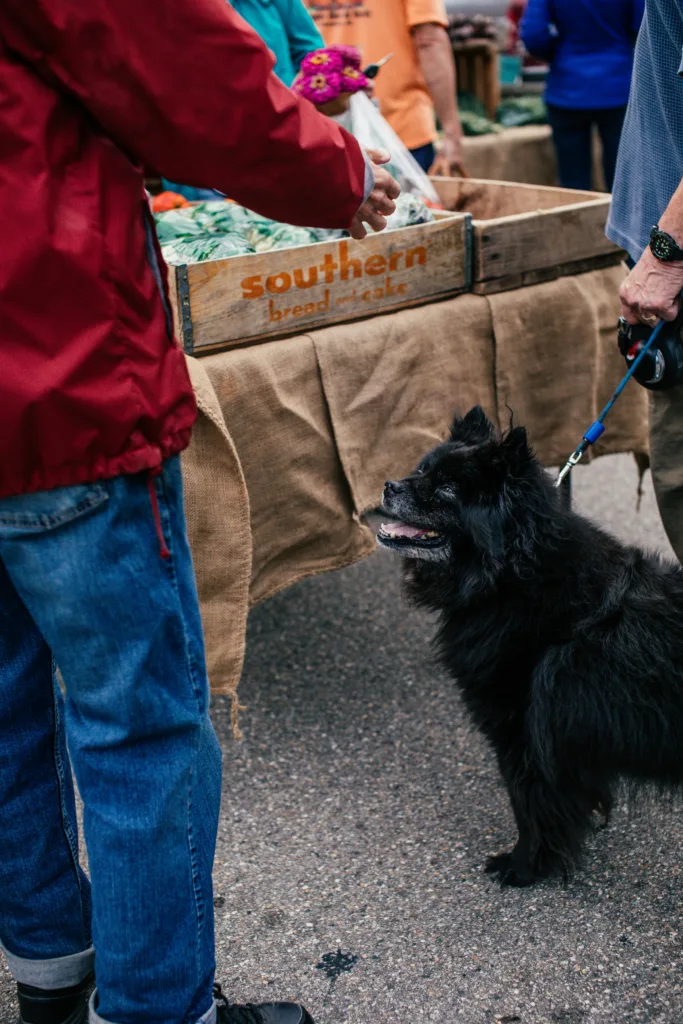Teaching your dog to behave at home is just the beginning. If you want your dog to confidently handle real-world scenarios like sidewalk cafes, crowded parks, or downtown strolls, socialization is key. It’s not just about “meeting other dogs.” It’s about teaching your dog how to stay calm, focused, and respectful no matter the distractions.
Whether you’re sipping coffee at a patio table, enjoying a hike, or navigating a busy market, your dog’s ability to handle stimulation in public reflects the quality of their training. As professional dog trainers in Nashville, we often meet dogs that respond perfectly in the living room but lose focus, pull, or bark the second they step outside.
Let’s walk through how to fix that.
What Real-World Socialization Really Means
True socialization goes beyond simple exposure. It means helping your dog stay mentally balanced and behaviorally consistent in unpredictable environments.
Real-world socialization includes:
- Seeing unfamiliar people, dogs, or objects without overreacting
- Walking calmly through foot traffic
- Ignoring dropped food, loud noises, or sudden movements
- Handling greetings appropriately
- Listening to commands in busy surroundings
The goal isn’t just friendliness. It’s emotional control and environmental awareness.
Common Socialization Challenges in Public Spaces
Each location presents unique obstacles for dogs:
Cafes and Restaurants
- Cramped quarters near strangers and other pets
- Tempting smells and fallen food
- Waitstaff movement and noise
- Impulse control around distractions
Dog-Friendly Parks
- Off-leash dogs and inconsistent behavior from others
- Bikes, joggers, or skateboards
- Excitement that leads to pulling or reactivity
Downtown Sidewalks or Suburban Streets
- Sirens, construction, and vehicle noise
- Food wrappers and litter on the ground
- Nervousness on slick flooring or sidewalk grates
- Reactivity when passing dogs on leash
These situations require training, preparation, and patience.
Build a Foundation with Structured Obedience
Before venturing into busy public areas, your dog should have reliable obedience skills in place. Basic commands like heel, place, leave it, and out are essential when distractions increase.
Our Basic Obedience Program gives dogs the tools to respond under pressure. We teach dogs how to stay engaged with their handler, even when the environment is unpredictable.
Use a Phased Approach to Socialization
Start simple, and build gradually. Here’s a three-step process to help your dog succeed in public.
Phase 1: Low-Distraction Areas
- Quiet residential sidewalks
- Empty school parking lots
- Open fields or hiking trails
- Practice heel and sit-stay drills
Phase 2: Controlled Public Places
- Outdoor shopping centers
- Pet-friendly retail stores
- Early morning visits to farmers markets
- Focus on duration stays and ignoring passerby
Phase 3: High-Distraction Scenarios
- Sidewalk cafes or outdoor events
- Busy parks with lots of foot traffic
- Downtown city streets during peak times
- Reinforce calm focus and redirect attention as needed
Progress through each phase based on your dog’s confidence and success. Rushing the process can lead to overstimulation or setbacks.
Tools That Support Public Training
The right equipment makes a huge difference. Bring tools that help your dog stay successful while you reinforce structure.
Helpful items include:
- A standard 6-foot leash
- Treat pouch with high-value food rewards
- Training collars, used properly
- Travel mat or elevated place cot
- Portable water bowl and shade when outdoors
If your dog struggles to stay calm in unfamiliar places, consider preparing them using strategies we shared in our backyard distraction training blog. That’s a great step before tackling sidewalks or patios.
Teaching Calm Greetings and Impulse Control
A socialized dog doesn’t run up to everyone. In fact, one of the most important lessons your dog can learn is how to ignore distractions until told otherwise.
Teach your dog to:
- Sit and wait for permission before meeting anyone
- Focus on you instead of lunging toward dogs or children
- Respond to “leave it” around food or moving objects
- Disengage from distractions when given the command “out” or “let’s go”
You are your dog’s best advocate. If someone approaches too quickly or your dog isn’t ready, it’s okay to politely say no to greetings.
How Often to Practice Socialization
Like all skills, public behavior improves with repetition. Try this simple schedule:
- 2 or 3 short sessions per week in low-distraction areas
- One structured public outing each week for 30–60 minutes
- Daily walks focused on loose leash and eye contact
- A visit to a high-distraction location every 2 to 3 weeks for challenge training
Dogs retain habits that are reinforced consistently, so make outings part of your normal routine.
When Should You Start?
Puppies can begin public exposure once they’ve received the appropriate vaccines. According to the American Kennel Club, early exposure during the critical learning phase can prevent fear-based behavior later on.
Older dogs benefit from socialization too. It’s never too late to build focus, trust, and calm habits in new settings.
When to Get Help
Some dogs need more than practice. If your dog displays the following, professional training is the next step:
- Barking or lunging in public
- Fearful shutdowns in busy areas
- Inability to follow commands outside the home
- Pulling, pacing, or growling around strangers or dogs
Our team at Off Leash K9 Training Nashville works with dogs at all stages of socialization. We know how to tailor real-world training so your dog becomes reliable in the places that matter most.
Final Thoughts
Socialization isn’t just about being friendly. It’s about teaching your dog how to handle the real world with confidence and control. Whether you’re relaxing at a coffee shop or walking through downtown Nashville, your dog can be the calm, focused companion you’ve always hoped for.
It starts with consistency, structure, and the right support system.
Ready to build real-world reliability in your dog? Schedule your training consultation today.

